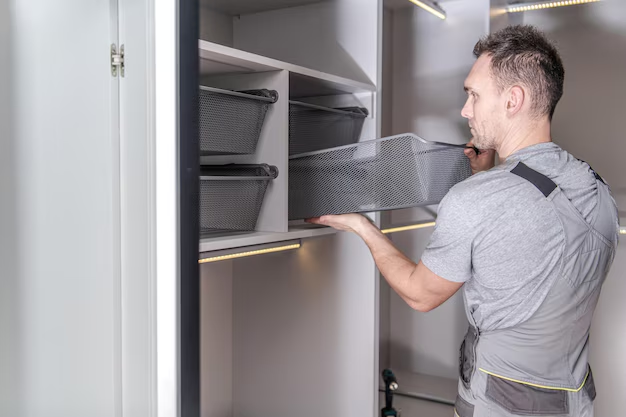The Perfect Chill: Finding the Ideal Refrigerator Temperature
When you open your refrigerator, you're usually focused on what's inside rather than how cool it actually is. However, maintaining the right temperature is crucial for food preservation. Keeping your food at the correct level of cool helps maintain freshness, prevent spoilage, and reduce health risks caused by bacteria. So, what temperature should your refrigerator really be? Let's delve into this essential topic and uncover the best practices for setting your fridge to ensure your food stays safe and fresh.
🤔 Why Is Temperature Important in a Refrigerator?
Refrigeration plays a vital role in food preservation. By lowering the temperature, it slows down the growth of harmful bacteria and minimizes the biochemical changes that can lead to food spoilage. Temperatures that are too high can accelerate food spoilage, while those that are too low can freeze and damage certain foods.
Ensuring Food Safety
- Bacterial Growth: Most harmful bacteria multiply rapidly between 40°F and 140°F (4°C and 60°C), often called the "Danger Zone." A cooler climate discourages bacteria growth.
- Food Longevity: Proper temperature settings help extend the shelf life of products by slowing down the enzymatic and microbial changes.
📏 The Magic Temperature: The Ideal Fridge Setting
As a general rule, the Food and Drug Administration (FDA) suggests keeping your refrigerator at 40°F (4°C) or below. However, aiming for 35-38°F (1.7-3.3°C) provides an ideal balance—cold enough to keep bacteria at bay but not so cold as to freeze certain perishable items or produce.
Setting Factors
- Appliance Efficiency: Not all fridges are created equal—those with superior seals and airflow systems may manage consistent temperatures better.
- Fridge Load: A well-stocked refrigerator keeps cold better than an empty one, but overloading can obstruct circulation, leading to uneven cooling.
Avoiding Freezer Burn
Foods and liquids might freeze if the temperature rolls too far below 32°F (0°C). Items like salads and some fruits might lose their taste or texture if uncomfortably chilled.
🌡️ Temperature Zones: Understanding Your Fridge Layout
Refrigerators are not uniformly cold. Certain areas are naturally warmer or cooler, impacting food storage choices. Understanding these zones can amplify your food preservation strategy.
Common Zones
- Top Shelves: Generally warmer; ideal for beverages, leftovers, or ready-to-eat foods.
- Lower Shelves: Colder areas of the fridge, great for storing eggs, milk, and raw meat.
- Crisper Drawers: Designed for fruits and vegetables, maintaining moisture to keep them fresh.
- Door Shelves: Warmest part; best for condiments and non-perishable drinks.
📋 Maintain Optimal Temperature with Regular Checks
Ensuring your refrigerator consistently maintains its set temperature requires some upkeep and monitoring.
Key Maintenance Tips
- Thermometer Check: Invest in a fridge thermometer to stay informed about the internal temperature regularly.
- Sealed Gaskets: Ensure door seals are clean and intact, preventing warm air from seeping in.
- Proper Airflow: Avoid overpacking, allowing air to circulate and maintain temperature evenly throughout.
Creating a fridge audit checklist can be beneficial in ensuring regular maintenance.
🛠️ Troubleshooting Temperature Issues
Sometimes, perfect settings don't translate into perfect performance. Identifying underlying issues is crucial for maintaining efficient refrigeration.
Common Problems and Solutions
- Temperature Fluctuations: May occur due to a malfunctioning thermostat, which should be inspected and possibly replaced.
- Frost Build-Up: Inspect for malfunctions in the defrosting system, while ensuring proper airflow.
- Sudden Warmth: Check condenser coils for dust build-up and confirm proper sealing of the door.
Maintenance should also include clearing dust from coils and ensuring nothing obstructs fan vents within the fridge.
❄️ Seasonal Adjustments and Energy Efficiency
Your refrigerator's performance can fluctuate with changing seasons and ambient temperatures, prompting minor adjustments for efficiency and proper food storage.
Seasonal Tips
- Warmer Months: Your fridge may need to work harder to maintain temperature; consider lowering settings slightly.
- Colder Months: Less stress on the appliance sometimes necessitates a mild increase in settings to prevent freezing.
Energy Conservation
Maintaining consistent refrigerator temperatures not only preserves food but also contributes to energy efficiency. Evaluate your settings and adjust to optimize performance balanced with reduced energy costs.
Energy-Saving Strategies
- Maximize fridge efficiency by keeping it in a cool spot, away from direct sunlight or heat sources.
- Regularly defrost and clean the freezer to avoid frost build-up impacting efficiency.
📝 Quick Reference Cheat Sheet
Here's a practical summary of refrigerator temperature tips:
- Optimal Refrigerator Temperature: 🥶 35-38°F (1.7-3.3°C)
- Avoid Freezing Foods: Below 32°F (0°C) is too cold.
- Danger Zone for Bacteria: Avoid 40°F or above (4°C or above).
- Top Shelf: Beverages and leftovers.
- Bottom Shelf: Dairy and meats (most perishable).
- Crisper Drawer: Fruits and vegetables.
- Door: Mustards, sauces, and juices.
🔍 Maintenance Checklist:
- Check and replace door seals.
- Monitor with a refrigerator thermometer.
- Ensure proper airflow inside.
- Dust down the external coils.
Keeping your fridge in prime condition ensures your food stays fresher longer and helps maintain food safety standards.
Remember, actively engaging with your fridge's settings and maintenance schedule will help you make the right adjustments for a perfectly chilled kitchen experience. Stick to these guidelines, and both your stomach and your energy bill will thank you for it!
